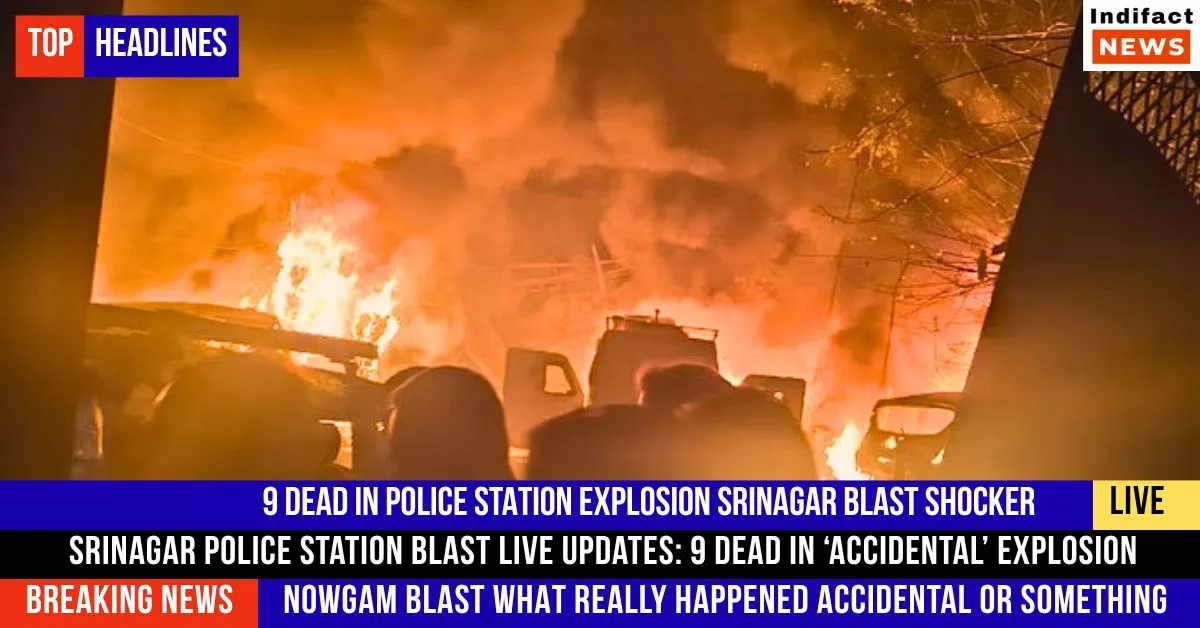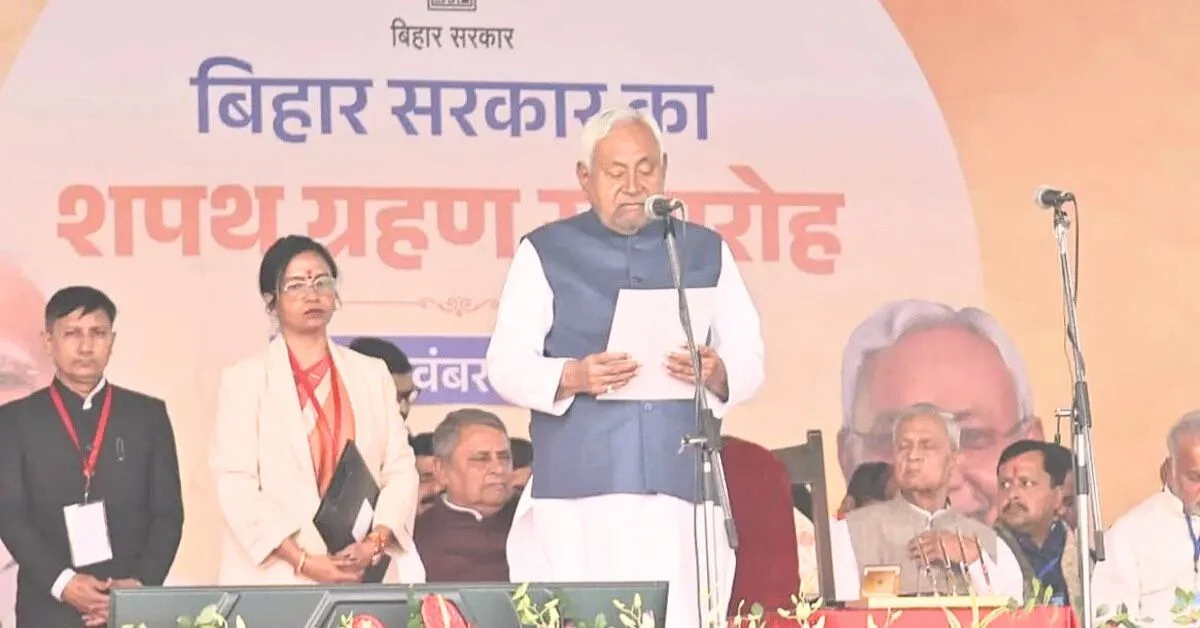Srinagar Police Station Blast a devastating explosion at the nearby police station jolted the quiet Nowgam area on the outskirts of Srinagar on the evening of November 14–15. A huge explosion occurred at the Nowgam Police Station premises at approximately 11:20 p.m., sending shockwaves into surrounding houses and cars. Nine persons, including police officers, forensic personnel, and civilians, were confirmed dead and over thirty injured. Families hurried to medical facilities. Silence enveloped the streets, broken only by confusion and sirens.
The Cause Explosives Under Processing, Not Terrorism
The Ministry of Home Affairs (MHA) has formally proclaimed the incident to be a “accidental explosion” during the processing of seized explosives, not a terror act, which allays certain concerns but raises new ones.
Here’s the breakdown:
- A massive explosives stash was moved from Faridabad to Nowgam for additional forensic examination; it was purportedly connected to a terror-module probe.
- The explosion caused the stockpile to explode while police and forensic experts were sampling the material.
- Jammu & Kashmir’s DGP, Nalin Prabhat, affirmed the team’s presence and stated that any suspicions of terrorism are “unnecessary.”
- The MHA reiterated this, calling for composure and declaring that no connection to terrorism has been discovered.
Therefore, this specific incidence seems to be a tragic mismanagement rather than a premeditated attack, even though the materials come from a terror investigation.

The Srinagar Police Station Blast Casualties and the Chaos
Srinagar Police Station Blast casualty details bring the reality of the tragedy into stark light:
- A number of police officers, forensic personnel, administrative officials, and one citizen were among the deceased.
- Many of the injured are in critical condition, and some have suffered trauma and severe burns.
- The explosion was so strong that surrounding homes were damaged and body pieces were seen 100 meters from the station.
Imagine a peaceful neighborhood, followed by a loud crack, broken windows, and people knocked off their feet. Witnesses characterized the scene as a bursting fault line of bombs in the wrong location at the wrong moment rather than a militant strike.
Why It Matters Lessons for Safety, Security & Public Trust
Srinagar Police Station Blast what happened in Nowgam isn’t just local news it surfaces multiple warning flags:
Explosive handling and storage: Although the stockpile was lawfully captured, the fact that it exploded during processing calls into question established procedures.
Risk to both officers and civilians: The hazard goes beyond the police station when such potent explosives are handled in a populous area.
Public trust and messaging: The MHA’s successful implementation of “no terror link” helps prevent fear, but it also necessitates openness. Why were these materials at that location, people will wonder? How secure is the region right now?
More general security narrative: Srinagar Police Station Blast given the nation’s recent terror assaults, any explosion raises the possibility of militant involvement. Authorities set a precedent that not all explosions are terror-related by rejecting a terror perspective in this case, which is crucial for a controlled public response.
What Comes Next The Investigation & Its Ripples
The Srinagar Police Station Blast probe is far from over. Authorities say:
Chemical composition, storage conditions, and procedural tracing will all be closely examined in a thorough forensic inquiry. The chain of custody from seizure (Faridabad) to storage (Nowgam) may be examined by security agencies.
Local trust will depend on victim recompense and the area’s return to normal. The issue is connected to a broader “white-collar terror module” inquiry involving radicalized professionals, even though a terror connection is ruled out in this case.
A Tragedy, A Warning, A Turning Point
In summary, Srinagar Police Station Blast this was a fatal accident that may have been considerably worse or possibly prevented if circumstances had been different. Nine people died, numerous more were hurt, and the neighborhood was shaken. The risks for safety are still high, even though the “terror” headline may no longer be as frightening.
It serves as a harsh reminder to Kashmir that danger isn’t always concealed by stealth assaults or bombs on cars. It can occasionally be found in the materials we collect, the locations we store them, and the procedures we follow. And for the country? It’s an opportunity to stop and pose challenging queries on accountability, risk, and procedure.
In the end, communities need certainty, victims need justice, and institutions need to be changed. Because the ramifications of a police station turning into an explosion zone overnight extend well beyond today’s news.


